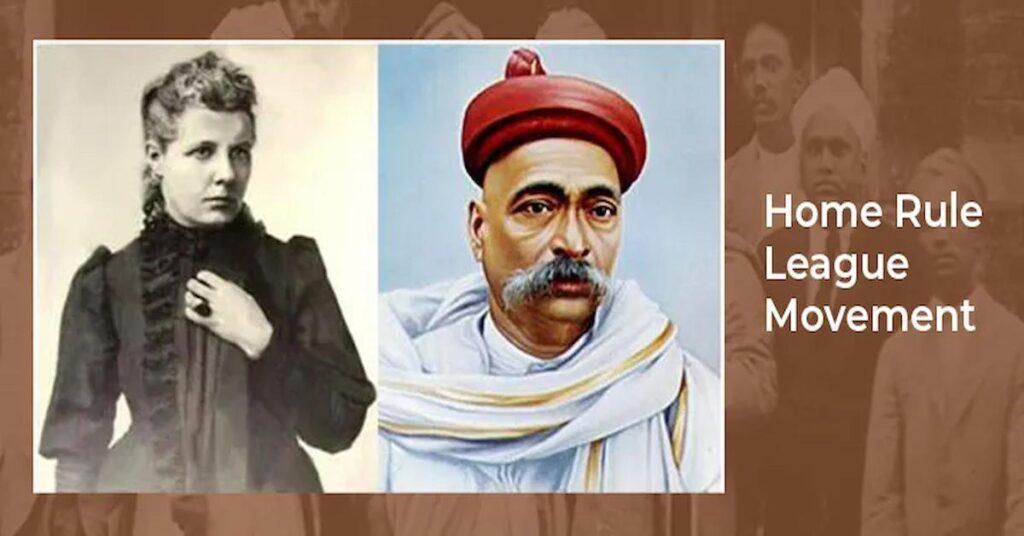Home Rule League movement:
The Indian Home Rule League Movement was a development in British India along the lines of the Irish Home Rule development and other home rule developments. Home Rule League, both of two fleeting associations of similar name in India laid out in April and September 1916 by Indian patriot Bal Gangadhar Tilak and British social reformer and Indian Independence pioneer Annie Besant.


Credits: opennaukri
Foundation of Home Rule League:
The Second Great War and India’s cooperation in it was the foundation for the Home Rule League. At the point when Britain proclaimed the battle against Germany in 1914, the moderate and liberal initiative stretched out their help to the British reason. Indian soldiers were shipped off to a few performance centers of the World conflict. Yet, the British organization remained non-committal to such objectives.
Towards charting a common path:
In 1916, the Annual Session of Congress started with two critical turns of events. One, moderate pioneers Pherozeshah Mehta and Gokhale, two fundamental voices of resistance against the assailant group, had kicked the bucket in 1915. In the Lucknow meeting of the Indian National Congress, conceding the aggressor group into the party was chosen.
Tilak set up the Home Rule League in 1916, Later Annie Besant chose to begin the Home Rule League without the help of Congress. Both the associations worked autonomously. These Leagues were used to bring broad promulgation through the press, talks, gatherings, and visits for self-government. They prevailed with regards to enlisting youngsters en masse and stretching out development to country regions. The Home Rule Movement in India acquired standards from the Irish Home Rule Movement.
The motto of the home rule movement:
The two Home Rule Movement associations completed serious misleading publicity all around the nation for the interest of the award of Home Rule or self-government to India after the conflict. During the Home Rule disturbance, Tilak gave the well-known trademark i.e. ”Home Rule is my inheritance, and I will have it”.
Targets of home rule movement:
- To accomplish self-government inside the British
- To get the situation with the territory, a political position concurred later with Australia, Canada, South Africa, and New Zealand.
- To utilize peaceful sacred strategies to accomplish their objectives.
Lucknow pact:
The Home Rule Movement and the subsequent moderate and assailant patriots opened the chance for a new talk with the Muslims. Under the Lucknow Pact (1916), the Congress and the Muslim League concurred that there ought to be self-government in India quickly. Consequently, the Congress administration acknowledged the idea of an isolated electorate for Muslims.
English response:
The reaction of the public authority of British India to the Home Rule Movement was not steady. At first, it began that there ought to be changes to accommodate more Indians in neighborhood regulatory bodies. As interest in Swaraj was raised by Tilak and Annie Besant and acquired prevalence, the British utilized the standard, worn-out ploy to confine the pioneers.
In 1919 the British government declared the Montagu-Chelmsford changes which guaranteed the slow advancement of India towards self-government. This caused profound frustration for Indian patriots.
Conclusion:
This development prompted the Montague Declaration of 1917 in which it was proclaimed that there would be more Indians in the public authority encouraging the improvement of self-administering establishments eventually acknowledging dependable states in India.
FAQ’s
Who launched the first home rule league movement and where?
Bal Gangadhar Tilak and Annie Besant
Indian patriot Bal Gangadhar Tilak and British social reformer Annie Besant launched the first home rule league movement in April 1916 at Belgaum.
Who was the president of the Lucknow pact?
Ambica Charan Mazumdar
He was the president of the Lucknow pact in 1916.
